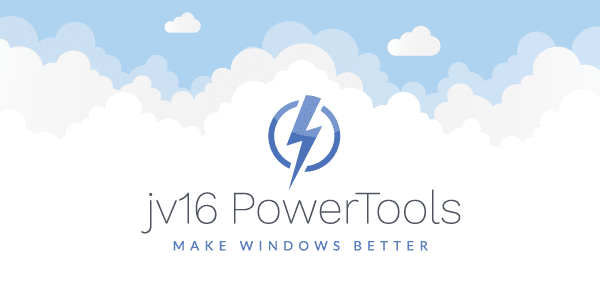The developer of RegCleaner, jv16 PowerTools, Uninstalr, WinFindr, Startup Timer, ScreenshotX, System Examiner and Windows Update Fixer.
Registry Cleaner Benchmark Study
These tests were performed in September 2013
Introduction
In the past Macecraft Software has published four different comparison studies that attempted to answer questions about the quality of different registry cleaning products. This study, however, is different. This time the focus is purely on performance – are registry cleaners worth using or not?
The purpose of this test was not to undermine any products or to say one product is better than another. Instead, the goal was to provide the best possible data to users, to allow them to make their own conclusions.
The tests were performed using a virtual computer based on the Oracle VM VirtualBox virtualization environment version 4.2.16 (R86992).
The test computer (i.e. the virtual client) was running Windows 7 Ultimate 64 bit with a base memory of 512 MB and 25 GB of hard disk space. The host computer running the virtual environment was based on Intel Core i7 3632Qm running at 2.20 GHz with 16 GB of RAM and with a 120 GB SSD system disk running Windows 8 (64 bit) with all the updates. Windows 7 was used as the test environment because of its more straightforward system startup procedure, which made it easier to test the system startup times.
The virtual client was run with limited CPU power (execution cap of 40%) to highlight the difference between different setups. In other words, it’s much easier to see the difference between, say, 100-second and 80-second Windows startup times than between 15-second and 13-second startup times.
Windows startup benchmark
The test was performed by manually measuring the Windows startup time. The Windows system was started three times in a row and the startup time was recorded. First, a fresh installation’s startup time was measured. Then, a number of popular software programs (such as Camfrog Video Chat, Internet Download Manager, iTunes, Mozilla Firefox, Opera, QuickTime, Virtual DJ, WinAmp and WinRAR, to name a few) were installed on the system and their installation directories and other related files were manually removed to simulate the state of the registry of a very unclean system. The startup time for this setup was measured and a snapshot of the system stage was created.
Finally, the unclean state of the virtual test system was cleaned with jv16 PowerTools 2014 and, for comparison, with CCleaner.
The jv16 PowerTools 2014’s Clean and Fix My Computer feature was used with the aggressive setting and all the found errors were fixed. No backups were created, and all other user confirmations were answered with ‘yes’. PowerTools 2014 found over 19000 errors from the system.
With CCleaner, its Cleaner and Registry features were run with all possible scans enabled. The Cleaner feature found over 28 MB of unneeded data to be removed from the system and the registry cleaner feature found over 1900 errors.
The snapshot feature of VirtualBox was used to ensure both programs analyzed exactly identical systems. After the system was cleaned using both programs, the startup time was measured again. The system was restarted a few times to ensure all the changes had been applied and that all system caches had been rebuilt before the actual testing (i.e. measuring of startup times).The startup times are found below:
| Case | Startup time 1 | Startup time 2 | Startup time 3 | Average startup time |
| Freshly installed Windows | 51 sec. | 52 sec. | 48 sec. | 50 sec. |
| Windows with dirty registry | 90 sec. | 102 sec. | 108 sec. | 100 sec. |
| After being cleaned with PT 2014 | 46 sec. | 44 sec. | 51 sec. | 47 sec. |
| After being cleaned with CCleaner | 98 sec. | 86 sec. | 87 sec. | 90 sec. |
Two things can be clearly seen from the above table. First, a very unclean registry will have a significant impact on Windows startup times. Second, cleaning the unclean registry with jv16 PowerTools 2014’s Clean and Fix My Computer feature made the average startup time drop from 100 seconds to just 47 seconds.
PCMark 7 benchmark
The test was performed using PCMark 7 system benchmark software by Futuremark. The benchmark was first run in freshly installed Windows 7, and next the system registry was made unclean by installing many popular software programs and incorrectly uninstalling them by manually removing their files. A snapshot of the state of the system was created and it was cleaned with both jv16 PowerTools 2014 and CCleaner and benchmarked. After the system was cleaned it was restarted a few times before running the benchmark to ensure all the changes had been applied and all the system caches had been re-created.The results of the benchmarks can be seen below:
| Case | Benchmark score |
| Freshly installed Windows | 1383 |
| Windows with dirty registry | 1166 |
| After being cleaned with PT 2014 | 1472 |
| After being cleaned with CCleaner | 1415 |
The results as seen above show that a Windows registry with a lot of errors does have an effect on general system benchmark scores and that cleaning the registry with a registry cleaning software provides improvement to benchmark scores.
Summary
While this test wasn’t as comprehensive as our previous tests, this time the test focused entirely on the effects of actually cleaning the system registry and not simply comparing the number of errors that different products find. This time we couldn’t many different products mainly because most of the products are commercial and their trial or demo versions do not allow all the found items to be removed or fixed, unlike jv16 PowerTools.
There are two main conclusions that can be made based on this test:
- A Windows registry with a lot of errors and unneeded data does have a measurable negative effect on general system performance, and
- A high quality registry cleaner software, especially jv16 PowerTools 2014, is able to improve general system performance.
It must be noted, however, that this test does not only test the effect of Windows registry cleaning. Both of the tested software, i.e. jv16 PowerTools 2014 and CCleaner, contain a wide array of cleaning features and these features were used as explained in more detail with the tests. Both software can clean, for example, unneeded temp files from the system. It should be safe to assume that cleaning also other parts of the system had a role in the test results, and that cleaning only the system registry is not able to provide as clear results.



Comments are closed.